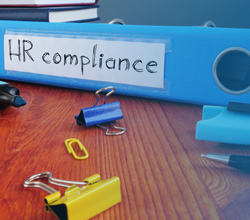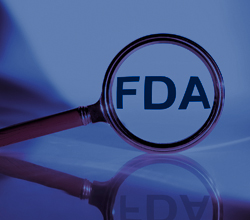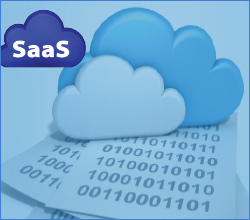
How to Keep Your Employees Safe and your Business Open in the COVID Era
 William Levinson
William Levinson
 90 Min
90 Min
Product Id: 706567
COVID-19 is making a comeback in the last part of 2020, primarily because people are dropping their guard against it the way they did in 1918. This threatens the health and safety of stakeholders (workers and customers) as well as continuity of business operations. Extensive guidance is however available on how to protect stakeholders and keep businesses in operation.

Safety Management 101 : The Essentials
 Jim loud
Jim loud
 120 Min
120 Min
Product Id: 706403
This webinar is designed to help companies develop cost effective and sustainable safety management strategies. Topics covered include; management responsibility, worker engagement, continuous improvement, consensus standards and how to move from second class to world class.

Doing Business in the Era of COVID-19
 William Levinson
William Levinson
 60 Min
60 Min
Product Id: 706519
The United States will have to go back to work despite the coronavirus menace, but lessons from 1918 show that failure to exercise common sense precautions could lead to additional illnesses and deaths. The good news is that off the shelf countermeasures are available to allow the safe resumption of business operations and avoid more shutdowns should COVID-19, or a mutated form of it, ever return.

Unsafe Behavior as a General Duty Clause Violation
 Michael Aust
Michael Aust
 60 Min
60 Min
Product Id: 706449
Have you considered the significant negative impact that unsafe behavior can cause in your organization? The impact goes well beyond the pain and suffering of the injured employee, the workers’ compensation cost and the impact of organizational reputation. Could an unsafe behavior act be an OSHA Act violation under the General Duty Clause?

Safety Management by Walking Around
 Jim loud
Jim loud
 120 Min
120 Min
Product Id: 706404
This webinar is designed to help any company avoid ugly accidents and surprises, both minor and massive (e.g., the Deepwater Horizon, the Columbia and Challenger space shuttle disasters). Rather than waiting for an accident to inform them of problems at the workface, it is critical for managers to proactively learn the reality of their workspaces – before an accident occurs. This understanding won’t happen from behind a desk but requires partnering with those actually performing the work to reduce potentially painful surprises and promote continuous improvement.

Requirements of An Effective PPE Hazard Assessment
 Michael Aust
Michael Aust
 120 Min
120 Min
Product Id: 706401
There is one OSHA requirement that very employer, regardless of the industry type has to comply with regarding personal protective equipment (PPE) and that is to conduct an effective assessment. However, conducting an effective assessment can be very challenging. This webinar will review what requirements are needed to conduct an effective hazard assessment along with one that will comply with OSHA requirements.

5 Tips to Engage Your Associates In Your Safety Program
 Michael Aust
Michael Aust
 60 Min
60 Min
Product Id: 706163
This webinar will focus on evolving a zero-incident workplace culture within any organization; rather an existing or not. We will discuss the pro’s and con’s of a implementing a zero incident workplace culture and describe how to determine if you are doing it right.

Managing Corrective Actions: How to stay compliant, stop alienating your workers and prioritize/optimize your efforts
 Jim loud
Jim loud
 90 Min
90 Min
Product Id: 706398
This webinar is intended to help companies ensure that corrective actions, both regulatory and internally identified, actually fix the problems they address, are appropriately prioritized and are tracked to a timely completion.

How to Conduct a Simulated OSHA Inspection - Safety & Industrial Hygiene
 John J Meola
John J Meola
 90 Min
90 Min
Product Id: 706350
Attend this webinar the principal elements that an OSHA Compliance Officer will look for during an inspection. Most of these elements are functional, operational, physical, such as machine guards, fire extinguishers, safety gear, PPE, etc. OSHA’s required ‘written programs’ in key safety disciplines, such as PPE, Lock Out-Tag Out; Silica Dust; Respirators; Hazard Communication/Globally Harmonized Standard; etc. will be discussed. It will explore the administrative side to the simulated inspection, such as your organization’s written safety & health program.

Complexities of the Department of Transportation (DOT) Hazmat Requirements
 Joe Keenan
Joe Keenan
 90 Min
90 Min
Product Id: 705302
Navigating the complexities of the Department of Transportation (DOT) Hazmat requirements can be daunting. This webinar will go over the fundamentals of DOT Hazmat so employees are properly and effectively trained in this area.

Practicing Laboratory Safety in the Workplace
 Joy McElroy
Joy McElroy
 90 Min
90 Min
Product Id: 704255
In this training program, attendees will gain an understanding of general laboratory safety and common lab operation procedures. The course will also instruct on what PPE to provide such as safety goggles, aprons, gloves, eyewash stations, fire extinguishers, first aid kits, etc.

The Control of Hazardous Energy (LOTO - Lockout/Tag-out) - OSHA 1910.147
 Michael Aust
Michael Aust
 60 Min
60 Min
Product Id: 702326
This webinar will help you understand OSHA’s requirements for preventing accidental release of energy or accidental start-up of equipment. You will learn what documents to have in place, including a written lockout/tagout plan, and how to implement it.

OSHA's Global Harmonized Standard (GHS) with New Safety Data Sheet (SDS) Format
 Joe Keenan
Joe Keenan
 90 Min
90 Min
Product Id: 706199
Attend this webinar to learn how to develop a written OSHA GHS Program, develop a comprehensive OSHA GHS Training Program, and understand what the new Safety Data Sheets (SDS) requirements are.

OSHA's "Focus 4" Safety Hazards: Falls, Caught In or Between, Struck By Hazards and Electrocution
 Joe Keenan
Joe Keenan
 60 Min
60 Min
Product Id: 706190
Attend this webinar to understand in detail Safety Hazards with specific emphasis on Hazard Recognition and Response and putting in place critical Written Programs and Employee Training to address.

How to Comply with the Chemical Facility Anti-Terrorism Standards (CFATS)
 Joe Keenan
Joe Keenan
 60 Min
60 Min
Product Id: 706187
Attend this webinar to understand the Chemical Facility Anti-Terrorism Standards (CFATS) in detail. Site-specific Chemical Facility Anti-Terrorism Standards (CFATS) questions and answers, as well as potential scenarios, will be addressed.

OSHA Record Keeping Compliance
 Kenneth S. Weinberg
Kenneth S. Weinberg
 60 Min
60 Min
Product Id: 702775
This OSHA Recordkeeping training will cover critical aspects of OSHA recordkeeping and its requirements, to be compliant with OSHA regulations.

Got Safety? Is Your Safety Success Due To Being Good or Just Luck?
 Michael Aust
Michael Aust
 60 Min
60 Min
Product Id: 706143
Attend this webinar to learn how to implement various programs, process, games, entertainment, etc. to ensure your organization “Instills the Value of Safety” in each employee. Learn how to define safety success in your organization and more importantly how to sustain it. Get introduced to a safety maturity curve so you can assess your organization’s safety culture and engage employees in each step of the curve.

OSHA's Update of Hazard Communication: What it Means for You
 Kenneth S. Weinberg
Kenneth S. Weinberg
 60 Min
60 Min
Product Id: 702313
This 60-minute webinar will cover the OSHA’s new Hazard Communication Standard and will discuss the differences between the old standard and the new standard so that attendees will be able to adapt and apply the requirements in the workplace.

Zero Incident Management - How to Structure and Build a Program to Achieve This Level of Proficiency?
 John J Meola
John J Meola
 90 Min
90 Min
Product Id: 705894
This webinar will explore the process increasingly being used by organizations of all sizes to create a safety culture that uses ZERO INCIDENTS as the measure of performance.

The Dos and Don’ts of Poster Compliance - Is Your Company in Compliance with the 2019 Poster Requirements?
 Margie Pacheco Faulk
Margie Pacheco Faulk
 90 Min
90 Min
Product Id: 705233
This training program will equip you with the tools needed to be compliant with workplace labor poster regulations and avoid paying high penalties and fines. It will assist HR, business owners, and professionals responsible for guiding their companies to follow regulations and reduce their risk.


























